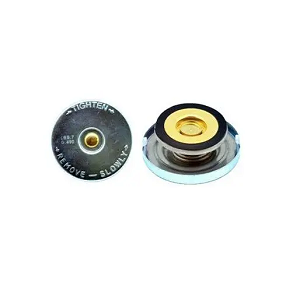
Is the expansion vessel or cooling system (slowly) losing pressure? It could be a leak in either direction.
First make sure that there is no leak to the outside of the engine. Leaking cooling liquid can evaporate quickly when the engine is hot, which makes it hard to detect. Look for traces of dried cooling liquid. This has usually the colour of the liquid itself: yellow, green or red, depending on the brand and type of liquid. It can easily be fixed by tightening the hose clamp or replacing a cooling water hose.
Sometimes, the leak may show up when using a pressure tester to apply pressure on the system. Also check that the rubber seal of the radiator cap (or expansion cap) is still intact and not worn out.
What if no traces of leaking cooling liquid can be seen?
If the liquid does not run out, it may also escape via the heat exchanger that is connected to the water from outside the vessel. It means that – the other way round – water from outside the vessel enters the cooling system.
As a test, pinch off the outgoing cooling hose from the water from outside the vessel at the exhaust injection elbow. With the engine running, the impeller pump should be building up pressure (no risk of damage) and the cooling system should start filling in case of a leak between the outside water system and the engine heat exchanger. The fluid level in the expansion vessel should rise. That is when it is time to replace the rubber sleeves. The sleeves separate the ”outside water system” from the ”coolant system”.
If all the above is not the case and the motor oil contains no cooling liquid, the engine may also have let cooling liquid enter into the combustion chamber. The cause could be a leaking head gasket or cracks in the cylinder head. Many mechanics cannot determine this fault from the outside for sure. Especially in case of a small leak, this is very unpleasant and hard to assess.
Possible solutions include:
A simple pressure tester (also useful for the first and second step). A low-cost solution, but make sure that the kit comes with the right cap. The tester is also available from AB Marine service, if so required. Alternatively, a nitrogen tester is also a reliable testing tool. It shows when nitrogen from the combustion gets into the cooling liquid. For this, google on e.g. “cylinder head leakage tester kit”.
If you cannot find the cause in steps one and two, remove the cylinder head for further inspection.
